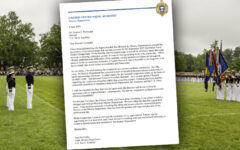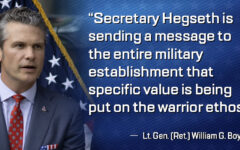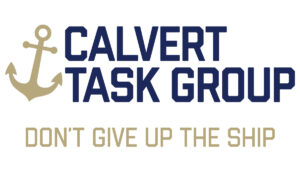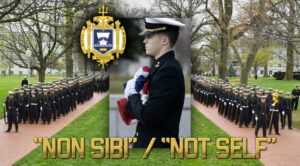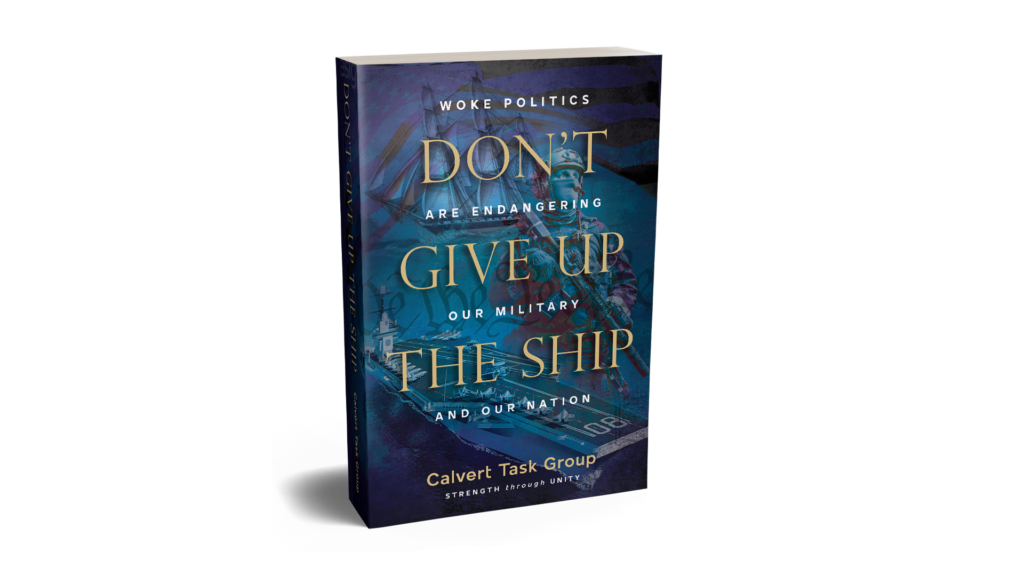Demographic Diversity Is Not Our Strength
6 September 2024 2024-09-06 15:35Demographic Diversity Is Not Our Strength
By CDR Phillip J. Keuhlen, USN ret, USNA ’71
There is an old saw in leadership circles, “You get what you inspect.” It recognizes that what you choose to measure and what you ignore conveys to your team what aspects of any situation are important to you.
Nowhere is this more evident than in Navy Diversity, Equity & Inclusion (DEI) programs.
As reflected in those programs’ origin document, the Task Force One Navy Final Report (TF1N) of January 2021, U.S. Navy DEI programs focus exclusively on demographic diversity of race, ethnicity, and gender.
Likewise, the lopsidedly one-sided bias of reference material recommended to Naval Academy educators on the topic of “diversity” clearly conveys that the Navy’s Diversity enterprise does not value diversity of thought with respect to its indoctrination.
One of the earliest critiques of TF1N and its underpinning references identified four critical flaws that compromise the intellectual integrity of the study and its conclusions.
The first critical flaw was that it was an inquiry that started with its conclusion dictated by the Chief of Naval Operations (CNO).
Its Chartered purpose was to, “analyze and evaluate factors in our society and military that detract from Navy readiness, such as racism, sexism and other structural and interpersonal biases.”
The CNO continued, “TF One Navy will seek to promptly address the full spectrum of systemic racism, advocate for the needs of underserved communities, and work to dismantle barriers and equalize professional development frameworks and opportunities within our Navy.”
Any Officer assigned to execute the CNO tasking could only understand it as directing a final report that portrayed the Navy as systemically racist and sexist.
The second critical flaw identified in the Task Force One Navy effort was its assumption that demographic diversity is an organizational strength. TF1N cited two references to assert a basis for benefits to the U.S. Navy by cultivating demographic diversity:
- McKinsey & Co, report “Diversity Matters” 2015, and
- PNAS article “Ethnic diversity deflates price bubbles” 2014.
This assumption was flawed because:
- TF1N provided no basis for claiming an analog between commercial financial performance in the studies and military readiness or mission effectiveness.
- The data was extrapolated far outside its range.
- TF1N misrepresented one study’s conclusions regarding gender and ignored its explicit warning about the fallacy of equating correlation with causation.
- TF1N ignored the warning in the other study that scholarship on diversity benefits was mixed, as well as its conclusion that performance gains in their study were due to distrust caused by ethnic differences between participants, a factor that ought to be of concern for an effective military organization.
The third critical flaw in TF1N was its decision to evaluate the diversity of the Navy against the demographic makeup of the nation. When the Navy is compared against the demographic distribution of the population eligible by law to serve (considering age and educational attainment), the TF1N conclusions about demographic inequities evaporate.
The fourth critical flaw of the Task Force One Navy effort was its blatant ideological bias.
The TF1N parent precursor, Executive Order 13583 of August 18, 2011 established a “Coordinated Government-Wide Initiative to Promote Diversity and Inclusion in the Federal Workforce,” discussed the importance of equal opportunity and merit in implementation of the order, and required the “order shall be implemented consistent with applicable law,” explicitly citing 5 U.S.C. 2301 that requires “selection and advancement should be determined solely on the basis of relative ability, knowledge, and skills, after fair and open competition which assures that all receive equal opportunity.”
In the TF1N Final Report, merit and equal opportunity were jettisoned. Its ideological frame of reference and agenda are evident in the language and terminology used throughout.
The words ‘diverse’ and ‘diversity’ appear frequently, on average more than twice per page throughout the TF1N Charter and TF1N Final Report.
Themes central to Critical Race Theory (CRT) a movement that questions the very foundations of the liberal order, including equality theory, legal reasoning, Enlightenment rationalism, and neutral principles of constitutional law, find an active voice in the TF1N Charter and Final Report.
- CRT’s key theme is under-representation of minorities in the distribution of social goods, benefits, privilege, and status. The term ‘under-represented’ occurs more than 40 times in the TF1N Final Report.
- TF1N is laden with the jargon of CRT including “lived experience,” “intersectional experience,” “systemic inequities and racism,” “structural and interpersonal biases,” “equity,” “unconscious bias,” and “identity.”
This language cannot be an accident: it does not appear in the source Executive Order. It confirms a philosophy and political agenda on the part of those who wrote the Task Force One Navy Charter and steered the enterprise.
It also answers why data was manipulated in support of the TF1N systemic inequity narrative: without the mathematical sleight of hand to create the false impression of under-representation, the entire effort collapses.
That initial critique of TF1N was published in the same year as the Navy report. Since that time, a growing body of scholarly literature challenges treating McKinsey’s assertions as ‘uncontested truth.’
Multiple studies argue that the evidence of business benefits of demographic diversity that underpin the Navy DEI Enterprise is weak or non-existent.
[Wang & Clift (2009), Klein (2017), Edmans (2018), Ely & Thomas (2020), Levitt (2021), Green & Hand (2021].
Beyond that, more recent analysis (Gardner, 2023) states that McKinsey’s research has several fundamental flaws and should not be cited as a robust assessment of financial benefit of more diverse organizational leadership.
Even more recent analysis (Green & Hand 2024) concludes that McKinsey’s studies neither conceptually (in terms of the direction of causality) nor empirically (in terms of their set of large US public firms) support the argument that large US public firms can expect improved financial performance if they increase the racial/ethnic diversity of their executives.
More fundamentally, for a military establishment, DEI Programs ignore compelling, award winning, US-based, internationally recognized research (Putnam, 2007) on the adverse effects of multiculturalism on social solidarity and social capital (discretionary effort) in communities of all sizes.
Putnam notes that without creating cross-cutting forms of social solidarity and more encompassing identities (a broader sense of ‘we’), racially and ethnically diverse communities are fragmented by racial/ethnic differences in the short to medium term.
- Trust is lower, altruism, and cooperation rarer overall, not just along in-group/out-group divisions.
- Members expect the worst from the community and its leaders.
- Members volunteer less and work less on community projects.
- Members have less faith that they can make a difference and withdraw from collective life, both attitudinally and behaviorally.
U.S. Navy ships and aircraft squadrons perform all the functions of the communities that Putnam studied. Given the nature of Navy personnel rotations they typically turn over about one third of the organization every year.
Thus, Navy commands are perpetually in the short/medium term where the adverse effects of demographic diversity on cohesion, morale, and combat effectiveness are most pronounced.
Programs like DEI and various “Pride Months” accentuate and celebrate differences rather than building common identity, command cohesion, and through it, combat effectiveness.
The Armed Forces spend several hundred million dollars directly on DEI programs and divert at least ten times that cost in servicemembers time from high priority maintenance and other readiness activities to receive DEI indoctrination.
Perhaps most alarming, at least one major Navy mishap was partially attributable to the lack of trust and unit cohesion attributed by Putnam to unmitigated adverse effects of community diversity.
A January 14, 2019, Navy Times article on the USS Fitzgerald collision investigation stated,
“The probe exposes how personal distrust led the officer of the deck, LTJG _______, to avoid communicating with the destroyer’s electronic nerve center — the combat information center, or CIC — while the Fitzgerald tried to cross a shipping superhighway.”
This collision cost the lives of seven sailors, severely injured another three, and took a frontline unit offline at a cost of 3 years and over half a billion dollars.
Like the Founding Fathers, who foresaw the challenges to the nation and strongly emphasized the melting pot model of assimilation of American newcomers, Putnam highlights the achievement of the US Army in the last quarter of the 20th Century, well before DEI programs, in constructing a common identity with increased solidarity in the presence of ethnic/racial diversity by emphasizing shared identity and common purpose across racial lines.
Putnam also considers the broader lessons of how the massive wave of immigration to America was absorbed in the first quarter of the 20th Century. It is an account of centrifugal forces on civic cohesion successfully mitigated.
Putnam concluded:
- That assimilation via public schools, civic programs to embrace American ideals, naturalization processes, and language requirements resulted in the transformation of ethnic nationalism to civic nationalism.
- That this was not a preordained inevitable path, yet over several generations ethnic and racial differences became muted in America and assimilation became the master trend of the 20th Century.
- That by 1990 ethnic silos had largely evaporated and only 20% of white Americans were married to someone of the same ethnic background.
- That as of 2022, 19% of married opposite-sex couples in the United States were interracial, according to the Census Bureau, a significant increase from 1967, when only 3% of newlyweds were intermarried.
The Navy asserts that its DEI Programs create a positive return on readiness, and through that, on successful mission accomplishment. Beyond earlier criticisms of the assumptions, methods, and conclusions of the TF1N Final Report, a substantial and growing body of scholarship demonstrates that the references that the Navy relies on for that assertion are not replicable and should not be relied on to underpin investment decisions about DEI programs.
Separately, prize winning research shows that cultivating and celebrating Demographic Diversity destroys social cohesion and social capital in communities akin to Navy commands.
It also shows the success of prior civil and military practices to foster the assimilation and common identity formation so critical to military mission success.
The DEI Enterprise pointedly ignores the evidence concerning its program underpinning, rejects proven approaches to building effective organizations, diverts resources away from high priority tasks that directly affect combat effectiveness, and doubles down on replacing equal opportunity and merit with a return to racialism.
Demographic Diversity is NOT our strength in the U. S. Navy.
It is well past time to dismantle the counterproductive DEI Enterprise and reorient the Navy to basic precepts.
Navy leadership must embrace the American ideal of “…one Nation under God, indivisible, with liberty and justice for all.”
They must lead morally to assure color-blind meritocracy, the law of the land, and reject demographic discrimination in every aspect of military service.
They owe no less to the sons and daughters of America they send in harm’s way than the most capable wardrooms, chiefs’ quarters, and shipmates they can field.
All hands must rededicate the Naval service to mission success through the hierarchy of Ship, Shipmate, Self… in that order.
Phillip Keuhlen is a retired nuclear submarine Commanding Officer and nuclear industry senior manager. He writes on topics related to governance and national security. His work has appeared at American Greatness, Real Clear Defense, The Patriot Post, and the Brownstone Institute.



